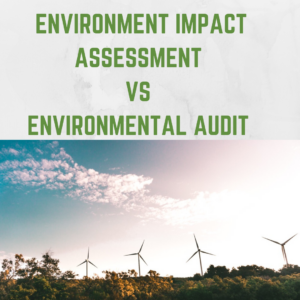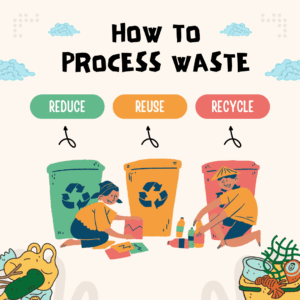When you walk past a construction site, what do you see? Piles of sand, cement bags, offcuts of timber, broken tiles, maybe heaps of rubble and plastic water bottles scattered around.
Now imagine this: multiply that by hundreds of active sites from skyscrapers in Nairobi to housing estates in Kiambu, to roadworks in Eldoret, and you start to see the real picture.
The building and construction industry is booming, but it’s also one of the biggest generators of waste. And while this waste often goes unnoticed, it holds incredible potential if handled the right way; not just for cleaner cities, but for greener profits too.
Let’s unpack this together; simply, practically, and truthfully and see how Kenya’s construction industry can embrace a circular economy future. Find more related posts here.
Table of Contents
What Kind of Waste Does the Construction Industry Produce?
Every stage of a building’s life from design to demolition, produces waste. Some of it is obvious, like broken bricks. Others are hidden, like packaging waste or leftover paint.
Here’s what typically piles up on-site:
1. Inert Construction and Demolition Waste (C&D Waste)
This includes rubble, concrete, tiles, stones, sand, and ceramics. These materials aren’t biodegradable but can be recycled into road base materials or reused in landscaping.
2. Wood Waste
Timber offcuts, plywood, formwork, and pallets from construction deliveries. Some of this can be reused, repurposed, or converted into briquettes and furniture.
3. Metal Waste
Steel bars, nails, and aluminum frames are common — and highly recyclable if properly collected and stored.
4. Plastic Waste
Cement bags, water bottles, pipes, and packaging films. Sadly, this often ends up in open dumps or drainage systems.
5. Glass Waste
Broken windows, tiles, or mirrors, all recyclable if sorted early.
6. Hazardous Waste
Paints, adhesives, solvents, asbestos, oils, and electrical fittings. These must be handled carefully under Kenya’s hazardous waste management laws to prevent contamination.
7. Soil and Excavation Waste
Massive amounts of earth are moved in construction. With proper planning, it can be reused for backfilling or landscaping instead of being dumped illegally.
Why Construction Waste Matters
Because it’s everywhere. According to the National Sustainable Waste Management Act (2021), Kenya produces millions of tonnes of construction and demolition waste every year. Most of it ends up in landfills, open dumps, or even in rivers, clogging drainage systems and harming ecosystems.
But here’s the thing: about 60%–70% of that waste can be reused, recycled, or recovered.
The challenge? Many contractors don’t have waste management plans, and there’s little awareness about circular construction. That’s where education, regulation, and collaboration come in.
What Does Kenyan Law Say?
Kenya has a strong legal framework to guide proper waste handling in the construction industry. Here are the main ones you should know:
1. Environmental Management and Coordination Act (EMCA, 1999)
This is Kenya’s main environmental law. It makes it mandatory for any developer to prevent waste pollution and apply for a NEMA EIA license where the developer ought to include environmental management plan.
2. Environmental (Impact Assessment and Audit) Regulations, 2003
Before starting a project, developers must carry out an Environmental Impact Assessment (EIA) and later an Environmental Audit (EA) to ensure the project complies with waste and environmental management standards.
3. Waste Management Regulations, 2006
These regulations require all construction waste to be:
- Segregated at source (concrete, metal, timber, etc.),
- Stored in suitable containers,
- Collected and disposed of through licensed waste handlers approved by NEMA.
4. Sustainable Waste Management Act, 2022
This Act is a game-changer. It promotes the circular economy, where waste becomes a resource. It also calls for Extended Producer Responsibility (EPR) — meaning developers, manufacturers, and suppliers must take responsibility for the waste generated from their products.
How the Construction Industry Can Join the Circular Economy
Circular construction is about designing out waste and keeping materials in use for as long as possible. It’s not just about recycling, it’s about rethinking how we build.
Here’s how:
1. Design for Durability and Reuse
Architects and engineers should choose materials that last longer and can be reused at the end of a building’s life. Modular design (buildings that can be easily taken apart) helps reduce demolition waste.
2. Use Recycled Materials
Recycled concrete, reclaimed timber, or metal can replace virgin materials. This reduces costs and your project’s carbon footprint.
3. Partner with Licensed Waste Handlers and Recyclers
Don’t just dump rubble. Partner with licensed waste handlers approved by NEMA who can sort, crush, and reuse materials safely.
4. Implement Waste Segregation on Site
Provide labeled skips or bins for wood, metal, plastic, and rubble. Train workers on sorting, it’s the simplest but most effective way to reduce waste.
5. Repurpose and Upcycle
Old wood can become furniture or formwork for future projects. Broken tiles can be used in mosaics or garden paths. Creativity turns waste into value.
6. Monitor and Report Waste
Developers should track how much waste is generated, recycled, or reused and include this in environmental audits. Transparency builds trust and compliance.
Real-Life Example in Kenya
- Eco-friendly developers like BuildX Studio are using locally sourced, sustainable materials and modular designs to reduce waste.
Why Going Circular in Construction Makes Sense
- It saves money. Reusing materials cuts purchasing and transport costs.
- It reduces landfill waste. Less dumping means cleaner cities and fewer fines.
- It attracts investors. Green building certifications (like EDGE or LEED) attract eco-conscious clients and funding.
- It builds a good brand. A sustainable company stands out in Kenya’s fast-growing construction sector.
The Future of Building in Kenya
Kenya’s Vision 2030, Sustainable Waste Management Act (2022) all point toward a zero-waste, circular future. This means every new project, whether it’s a road, hotel, or housing estate, should include waste management and circular economy planning from day one.
Sustainability is no longer an option, it’s a necessity.
Let’s Build Responsibly, Together
If you’re in the building and construction industry and you want to:
- Develop a waste management plan for your project,
- Conduct an Environmental Impact Assessment (EIA) or Audit,
- Understand NEMA licensing and compliance requirements, or
- Integrate circular economy principles into your design…
Let’s collaborate.
Email valeriekinoti@gmail.com for environmental consulting and circular economy integration services tailored to your construction project.


